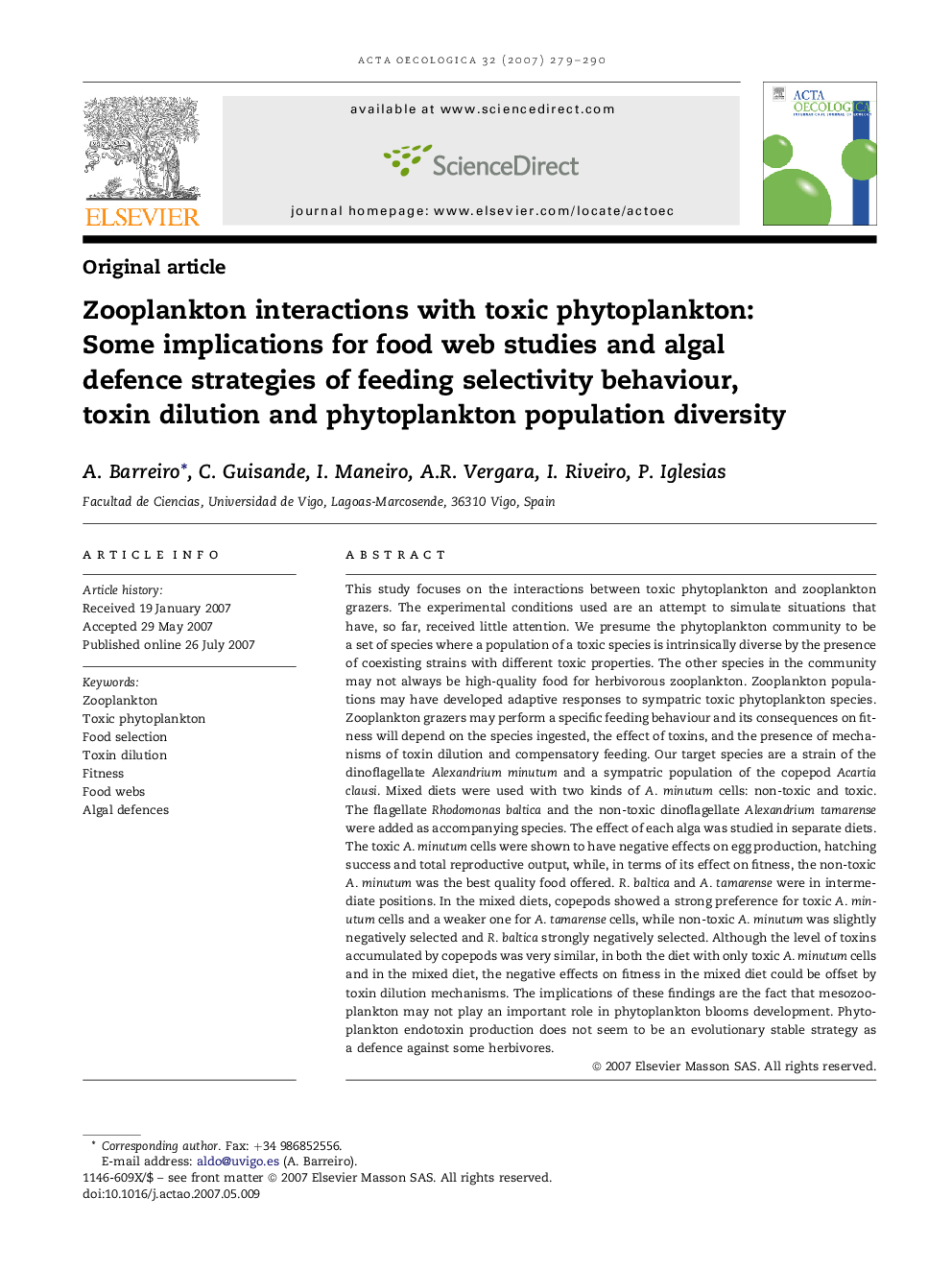| Article ID | Journal | Published Year | Pages | File Type |
|---|---|---|---|---|
| 4381694 | Acta Oecologica | 2007 | 12 Pages |
This study focuses on the interactions between toxic phytoplankton and zooplankton grazers. The experimental conditions used are an attempt to simulate situations that have, so far, received little attention. We presume the phytoplankton community to be a set of species where a population of a toxic species is intrinsically diverse by the presence of coexisting strains with different toxic properties. The other species in the community may not always be high-quality food for herbivorous zooplankton. Zooplankton populations may have developed adaptive responses to sympatric toxic phytoplankton species. Zooplankton grazers may perform a specific feeding behaviour and its consequences on fitness will depend on the species ingested, the effect of toxins, and the presence of mechanisms of toxin dilution and compensatory feeding. Our target species are a strain of the dinoflagellate Alexandrium minutum and a sympatric population of the copepod Acartia clausi. Mixed diets were used with two kinds of A. minutum cells: non-toxic and toxic. The flagellate Rhodomonas baltica and the non-toxic dinoflagellate Alexandrium tamarense were added as accompanying species. The effect of each alga was studied in separate diets. The toxic A. minutum cells were shown to have negative effects on egg production, hatching success and total reproductive output, while, in terms of its effect on fitness, the non-toxic A. minutum was the best quality food offered. R. baltica and A. tamarense were in intermediate positions. In the mixed diets, copepods showed a strong preference for toxic A. minutum cells and a weaker one for A. tamarense cells, while non-toxic A. minutum was slightly negatively selected and R. baltica strongly negatively selected. Although the level of toxins accumulated by copepods was very similar, in both the diet with only toxic A. minutum cells and in the mixed diet, the negative effects on fitness in the mixed diet could be offset by toxin dilution mechanisms. The implications of these findings are the fact that mesozooplankton may not play an important role in phytoplankton blooms development. Phytoplankton endotoxin production does not seem to be an evolutionary stable strategy as a defence against some herbivores.
